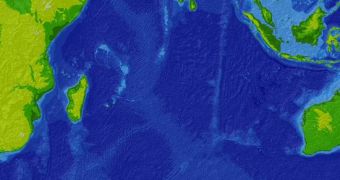The Indian Ocean, despite being one of the most important bodies of water in the world, is also the least studied of all oceans, and experts are currently looking at stamping that out. That is to say, over the next months, an intricate network of sensor buoys will be spread across its water, in a bid to determine the best course of action for farmers with lands in the water's sphere of influence. The Indian Ocean is the birth place of the monsoon that blesses India at equal intervals.
The entire country has lived since the dawn of time according to this natural rhythm, which implies that, once every six months, the rainy season comes and drops rain over the country, swelling the rivers, and bringing harvest to life. The other six months are dry, and, over the millennia, the Indian people have become accustomed to these phenomena, and have learned to control them. But recently, as climate change has begun to exert an increasingly large toll on the waters South of the country, these patterns have started changing, and, with them, the entire way in which farmers keep millions of people from starving to death.
The researchers in charge of the study, who published their intentions in the scientific journal Bulletin of the American Meteorological Society, say that the Indian Ocean feeds approximately 33 percent of the world's population, with just the monsoon it carries. Grazing and cropping all depend on the regularity of these cloud movements, and any delays could result in a catastrophic decline in food sources in an area that is already severely struck by poverty.
“The Indian Ocean is one of the remaining great unknowns because, historically, we had little ocean data from that part of the world. We haven't even had very good meteorological data from the Indian Ocean,” one of the authors of the recent report, University of Tasmania Integrated Marine Observing System Director Gary Meyers, told Reuters. The expert also said that this ocean had a tremendous influence on climate all around the world, and that it even influenced the way in which hurricanes were formed over the Atlantic.
Some 46 points of survey will be deployed in the waters during this study, and 22 of them have already been set up, in a very wide arc spreading from Indonesia to East Africa. Experts involved in this research, coming from India, China, Indonesia, South Africa, Australia and the United States, hope that the entire RAMA array will be completed by 2012 at the latest, and that the first results will be available sometime after.

 14 DAY TRIAL //
14 DAY TRIAL //